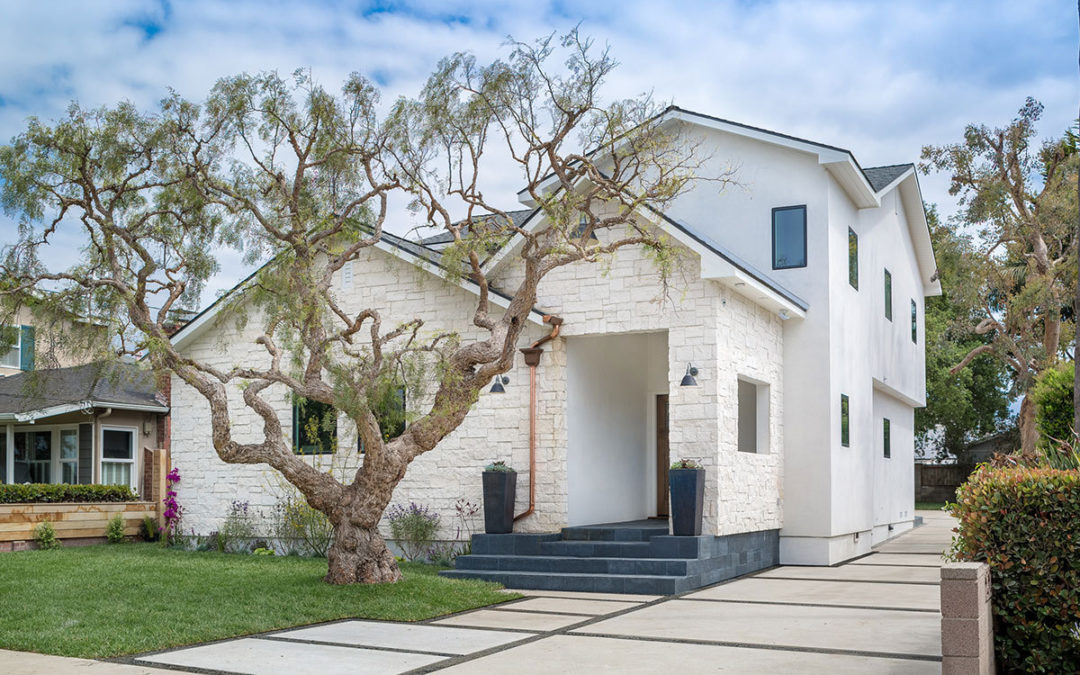When designing a new home, odds are you have a specific vision in mind that captures your personal style. A comprehensive design that flows from the exterior to the interior is essential in capturing that ‘feeling’ you’re looking for. There are plenty of options to choose from when picking the material of your houses’ exterior, some more common than others. While the material you choose largely influences the architectural style of your home, the pros and cons go further than just aesthetics. Different materials offer different characteristics, from upkeep to longevity.
Wood is considered the most popular choice for exterior siding, and for good reason. From a design standpoint, wood is very versatile and suits many styles. The wood can be left in its natural state, or be painted or stained a variety of colors. Furthermore, you can further customize the look by choosing from the many profile options available. Board and batten, shingles, clapboards, and drop siding are just a few options.
On the upside, wood siding is one of the more affordable materials as well as being quick and easy to install. On the other hand, wood can be damaged by the weather, as it is susceptible to rot, and may acquire damage from woodpeckers, termites, and other types of pests. Another important thing to note is that wood is not fire-resistant. If you live in a dryer climate where forest fires are more common, you may want to consider a different siding material.
Vinyl is a synthetic material that was made popular due to its’ affordability, longevity and durability. It comes in many different colors and forms, like fish scales, shingles, and horizontal or vertical panels. In some cases, vinyl can be made to look like natural materials such as stone or wooden shingles. Being extremely durable and low maintenance, the color does not fade, and only requires the occasional washing and does not tend to show dirt and debris easily. Vinyl can also save you money on your utility bills- if you opt for an insulated version, you can save money on your electricity in both hot and cold climates. Finally, it tends to be quick and easy to install, and lasts for decades.
For some, the unnatural look of vinyl will steer them away. If you are set on having a natural material, you may not be pleased with the look of vinyl. Correspondingly, after disposable, this material does not biodegrade easily unless it is properly recycled. One other con is that vinyl may crack or rot in extreme weather such as strong winds or high temperatures. It’s not waterproof either, so if you live in a particularly rainy location, you may find that the wood underneath the vinyl may begin to become damaged or even grow mold.
Stone and Brick are great choices if you’re looking for a longstanding natural material that doesn’t require a lot of maintenance. Both of these materials are beautiful and unique, with each individual piece being different. While there are so many upsides to these options, they are much more pricey than their counterparts that we discussed before, with stone slightly edging out brick for the most expensive, but for good reason. Natural stone is completely resistant to any moisture, bugs, fire, or other potentially harmful elements.
With brick, you have a variety of options as well. You can have brick masonry installed that acts as the support for your home, or brick veneer which is just a thin layer to act as a traditional exterior siding. Brick comes in a variety of different colors, and can even be painted and treated to suit a variety of different housing styles. German smear is a popular one. This material requires almost no maintenance, just a quick power wash every five or so years, and your siding may last for up to 100 years. Like stone, it is resistant to fire, cold and hot climates. Both of these options are more expensive upfront, but will pay off in terms of durability and longevity.

